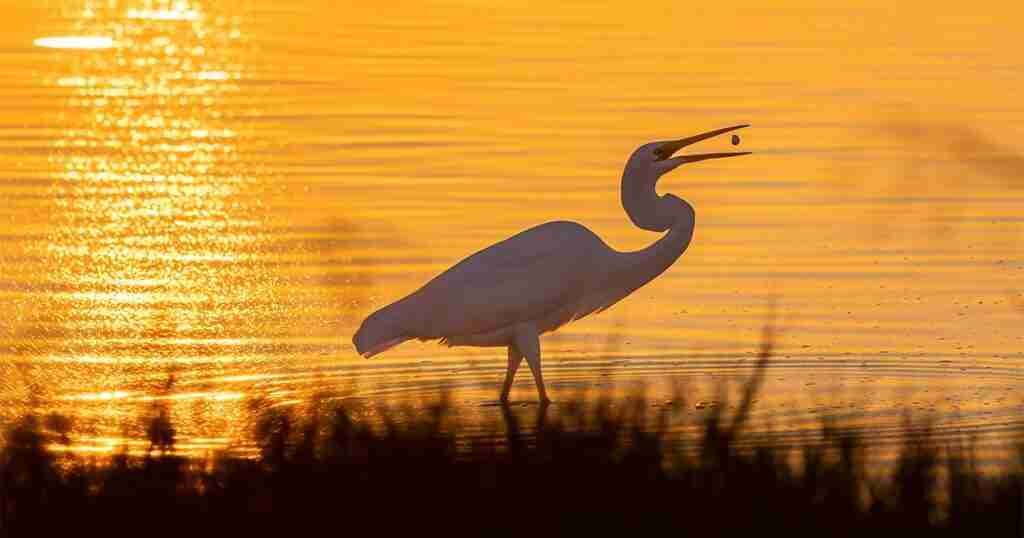[ad_1]
Birds are telling us that we must do more to invest in their future and federal funding is a key building block of that investment. The debt ceiling deal reached earlier this summer will impact the appropriations process through the remainder of 2023. Audubon urges Congress to reject calls to revert back to FY22 spending levels, which would be catastrophic for birds and communities.
The debt ceiling deal was agreed to by Congress and signed by the President, and we urge Congress to uphold the intent and purpose of the law. Further, recent GOP-led attempts to advance draconian cuts and politically motivated anti-environmental riders are unacceptable.
As Congress negotiates the twelve annual appropriations bills, Audubon urges increased investment for federal agencies and programs that will reduce carbon emissions, conserve our lands and waters, and recover bird populations.
The Bipartisan Infrastructure Law (BIL) and the Inflation Reduction Act (IRA) provide historic levels of funding for clean energy and conservation programs. Audubon urges Congress to protect these funding investments and help federal agencies move to implementation as swiftly as possible, so that communities across the country – in both red and blue states – can continue realizing these tangible benefits. The BIL and IRA funding should be considered a down payment to begin rebuilding our bird populations; annual investments through the appropriations process are still critical.
As the climate crisis continues to impact communities throughout the nation, Congress must seize this opportunity to address the multiple, ongoing challenges we are facing – extended drought and wildfire in the West, billion-dollar storm events ravaging coastal communities, the toxic spread of invasive species, and negative impacts to human health related to systemic underinvestment.
Federal dollars should put disadvantaged communities first, ensuring federal funding helps those who need it most and confronting historic underinvestment. In addition, many of these programs have been underfunded and understaffed for years. Addressing the climate crisis is impossible without drastically ramping up the conservation and clean energy programs necessary to foster rapid deployment of clean energy and climate-resilient infrastructure.
Audubon supports the following investments for FY24:
Army Corps of Engineers
$425 million for South Florida Ecosystem Restoration (Everglades) construction efforts
$75 million for the Upper Mississippi River Restoration program
$70 million for the Duckabush Estuary Restoration project
Department of Interior
$105 million for Migratory Bird Management
No less than $1.49 billion for the Bureau of Land Management (at least maintaining FY23 levels) to allow the agency to conduct activities and conservation planning important to the health of the sagebrush ecosystem and other ecologically and culturally important resources
$50 million for the North American Wetlands Conservation Act program
$25 million for Migratory Bird Joint Ventures
$15 million for the Delaware River Basin Restoration Program
$10 million for the Neotropical Migratory Bird Conservation Act program
$5 million for the Saline Lakes Integrated Water Availability Assessment at the United States Geological Survey (USGS)
No less than $541.5 million to sufficiently fund operations & maintenance of the National Wildlife Refuge System and address the staffing crisis (at least maintaining current funding levels)
Environmental Protection Agency
$4.6 billion for the Clean Water State Revolving Fund (SRF)
$4.1 billion for the Drinking Water SRF
$425 million for the Great Lakes Restoration Initiative (GLRI)
$54 million for the Puget Sound program
Bureau of Reclamation
$20 million for the WaterSMART Cooperative Watershed Management program
$15 million for the WaterSMART Aquatic Ecosystem Restoration program
$3.5 million for Minute 323 binational activities
$2.002 million for the Salton Sea Research Project
National Oceanic and Atmospheric Administration
$100 million for the National Coastal Resilience Fund
$70 million for the Pacific Coast Salmon Recovery Fund
$57 million for the National Estuarine Research Reserve System
As in past years, we continue to urge Congress to exclude harmful, partisan riders like the Greater Sage-Grouse rider, which prohibits the Department of the Interior from using any funds to make decisions regarding the listing of the Greater Sage-Grouse as threatened or endangered. Audubon also urges Congress to reject attempts to advance appropriations for the One Lake/Pearl River Basin Demonstration Project and the Yazoo Backwater Area/Flood Reduction, Wildlife Habitat, and Water Quality Improvement Project. Natural infrastructure alternatives should be pursued to address the longstanding flooding concerns in these regions.
Finally, Audubon opposes any attempts to roll back significant regulatory initiatives or bedrock laws that protect communities and wildlife from climate threats or pollution. Sustained federal funding for critical environmental and community programs remains the best way to protect the lands and waters that birds – and people – need.




Pingback: A Third of American Adults Are Birdwatchers, According to Nationwide Survey